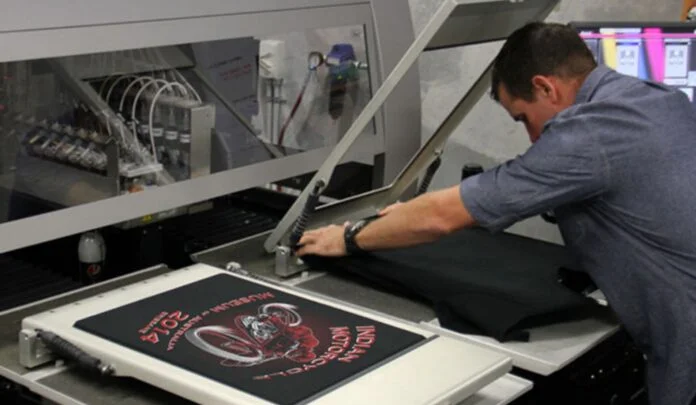DTG printing pros and cons
Hello everyone, We are experts in DTG printing as we are providing the service of direct to garment printing in Dallas so this article we will talk about the origins of DTG printing, the pros and cons of direct-to-garment DTG printing technology and its main uses.
For those who don’t know me, I’m Mirko, for more than 10 years I have been dealing with direct printing on fabric and with the ordinary and extraordinary maintenance of the dtg printer.
The origins of DTG printing
Digital textile printing technology originated in the mid-1990s, when the first inkjet printers began to be used for printing on textile materials. Initially, the technology was limited in print quality and the range of fabrics it could be printed on.
However, with the advance of technology and the development of increasingly performing inks, digital printing on fabric has seen a remarkable growth in terms of quality and application possibilities.
One of the major factors contributing to the development of digital textile printing technology has been the growing demand for personalization of textile products. This technology has made it possible to print high-resolution images and designs on fabrics of all kinds, allowing the creation of customized products quickly and efficiently.
In the following years, the digital printing technology on fabric has evolved further, thanks to the use of increasingly high-performance inks, increasingly advanced printers and new finishing techniques.
Today, digital textile printing has become a mature technology, offering a wide range of solutions for customizing fabrics and creating high quality textile products.
What is digital direct-to-fabric printing?
DTG (Direct-to-Garment) printing is a direct-to-garment digital printing technology, which allows you to print high-quality images and graphics on clothing items such as t-shirts, sweatshirts, shirts and more.
This technology uses a specially designed printer for applying ink directly to the fabric. Ink is applied through the print head, which glides back and forth across the surface of the fabric, depositing ink with precision to create the desired image.
DTG printing is capable of creating highly detailed images and vibrant colors on light or dark fabrics, and allows printing of single garments or small quantities, making it an ideal choice for producing personalized garments, such as custom printed T-shirts .
However, DTG printing has some disadvantages, such as the high cost of printers and consumables, and the limited ability to print on very thick fabrics or with uneven surfaces.
The 3 main stages of direct-to-fabric printing
The pros of DTG printing technology are as follows:
- Versatility: The direct-to-garment (DTG) printing method is versatile, allowing for printing on cotton, polyester, and hybrid textiles.
- Quality of prints : Thanks to inkjet printing technology, DTG printing can reproduce high-resolution prints with sharp details and brilliant colors.
- Personalization: DTG printing technology allows you to print personalized and detailed images on garments, without incurring additional setup costs. This means you can create unique prints for single orders without having to order large quantities.
- Efficiency: Since the DTG printing process is fully digital, the time and manpower required for production is reduced compared to other textile printing technologies. This means DTG printing can be a cost-effective choice for small to medium-sized orders
- Environmentally friendly: DTG printing technology uses water-based inks, which are less harmful to the environment than other types of ink used for textile printing.
- Precise details: DTG printing technology allows you to obtain precise and sharp details, with high color fidelity. This means that printed images look almost photographic, and that the smallest details are sharp and precise.
The cons of DTG printing technology are as follows:
- Cost : The cost of the equipment required for DTG printing is high compared to other textile printing technologies. This means it can be expensive to start a DTG printing business.
- Variable quality : The quality of DTG prints depends on the quality of the initial image and the quality of the machine used for printing. This means that prints can vary in sharpness, color accuracy and overall quality.
- Turnaround times: While DTG printing is effective for small to medium sized orders, turnaround times can be longer than with other textile printing technologies. This means it may not be the ideal choice for large orders with tight deadlines.
- Limitations on Fabrics: While DTG printing technology is very versatile, there are some limitations on the fabrics it can be used on.
- Print wear: Unlike other textile printing technologies, such as screen printing, DTG prints can fade and wear more easily over time and with washing. This means that prints may not last as long as other printing techniques.
- Equipment Maintenance: Maintaining DTG equipment takes time and constant attention. This means it can be expensive and challenging for small businesses to manage and maintain DTG printing equipment.
In summary, while DTG printing technology offers many advantages, there are also some disadvantages to consider.
High equipment costs, longer production times and fabric limitations are some of the challenges that can influence the choice to use this printing technology.
However, for businesses looking to create personalized products with high quality, DTG printing technology remains a popular choice.
The ability to create high-resolution prints with sharp detail and brilliant color makes it an ideal choice for brands looking to personalize their products and create a distinctive brand image.
And you, are you curious to know more about DTG printing and how it can help realize your custom design idea? Share your questions and curiosities with me!

